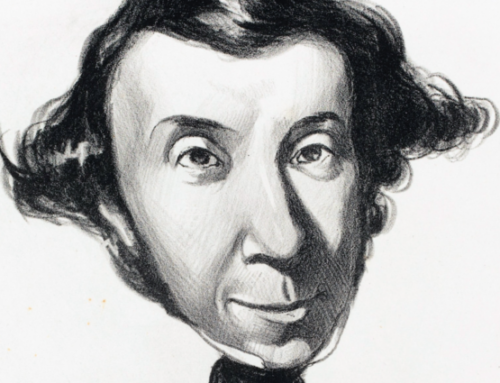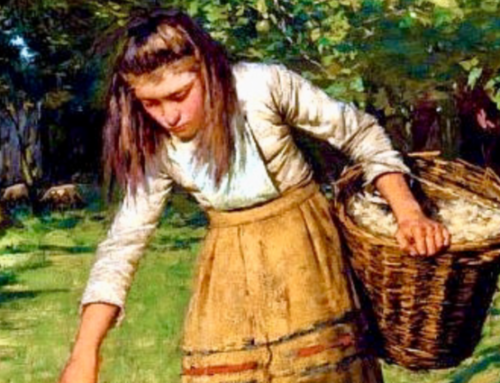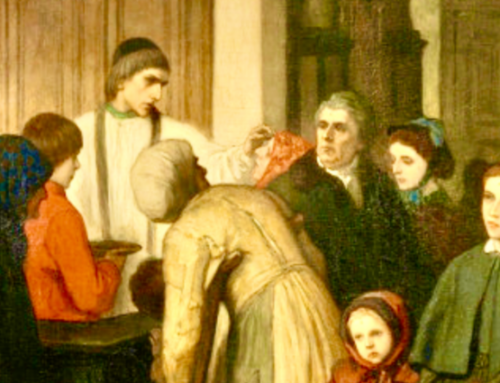Unlike Max Weber or Emile Durkheim, Robert A. Nisbet has not produced a remarkably original theory that has shaken the sociological world or revolutionized its concepts and methods of analysis. What Nisbet has done over the period of a long career in American sociology is to act as a consistent, and sometimes quite powerful and realistic, exponent of some of the major European sociologists and social philosophers. He has persistently related the ideas of such original thinkers as Tocqueville and Burke to the developing problems of the contemporary world. In this lies his chief value as a writer. It is one of the purposes of this essay to explain how and why this is so. Another purpose is to provide an evaluation of Nisbet’s ideas on community and their relevance to the problem of the isolated individual in twentieth-century society.
Although Robert Nisbet’s view of history is complex and multifaceted, its essentials are clear: the history of the Western world since at least the Renaissance has been dominated by an unceasing battle between traditionalism and modernism; the former is most often associated with such values as “community, moral authority, hierarchy, and the sacred” and the latter with “individualism, equality, moral release, and rationalist techniques of organization and power”; and though Nisbet prizes the values of modernity, he is not so naïve as to believe that their triumph has brought only good to the lives of men and women from the fifteenth and sixteenth centuries to the present. Rather, he is intensely aware of the erosion of one set of values by the other: that is, he sees the desiccation of community, the decline of authority, the devaluation of hierarchy, and the avoidance of the sacred by the overemphasis, and the often distorted emphasis, on the victorious values of modernism. In Nisbet’s philosophy, all of these values should have a place; and it is only the totalist ideologies—sometimes of traditionalism, sometimes of modernism—that seek the complete suppression of one set or the other.
In The Sociological Tradition, Nisbet goes to some length to explain how the great sociologists of the nineteenth and twentieth centuries have illuminated many of the aspects of the conflict of old and new values. Admitting that nearly none of these men could be accurately labeled “traditionalists,” Nisbet contends, nevertheless, that the major thinkers in sociology—Weber and Durkheim and Simmel and Tonnies among them—have taken the problems and conflicts arising out of the revolutions of the modern world and translated them into a powerful body of sociological typologies and concepts, and have done this in such a way as to show the attrition of one kind of values (the traditional) by the other kind (the modern) and to show the deleterious effects of this process in the life of the individual and that of the community. Nisbet points out how Tocqueville and Weber, for example, go beneath the more sanguine attitudes of their periods to perceive in the very operations of society hailed as progressive and liberating the darker side of alienation from other men and the moral and spiritual isolation of the individual in modern society. And Nisbet argues that the “moral texture of these ideas is never wholly lost” in these analyses, despite the often elaborate sociological methodology employed. Even within the framework of scientific study, a thinker like Weber or Tocqueville is a moral philosopher concerned with the value of community for the individual and with the distressing effects of its loss. Ethical insight and even artistic intuition play roles in the great sociological theories, Nisbet maintains. “Can anyone believe that Tonnies’ typology of Gemeinschaft and Gesellschaft, Weber’s vision of rationalization, Simmel’s image of metropolis, and Durkheim’s perspective of anomie came from logico-empirical analysis as it is understood today? Merely to ask the question is to know the answer.”
Of all the concepts developed by these major figures of social analysis, community is the one which Nisbet has most often meditated and explored in his writings. In The Quest for Community (1953), The Sociological Tradition (1966), The Social Philosophers: Community and Conflict in Western Thought (1973), Twilight of Authority (1975), and in other works, community has been a prime concern. “By community,” Nisbet writes, “I mean something that goes far beyond mere local community. The word . . . encompasses all forms of relationship which are characterized by a high degree of personal intimacy, emotional depth, moral commitment, social cohesion, and continuity in time.” Community involves the whole man. It endures. It “achieves its fulfillment in a submergence of individual will that is not possible in unions of mere convenience or rational assent.” It is at the opposite pole from the ad hoc committee.
Yet it is this deep and surrounding and sustained relationship Nisbet calls community that has almost disappeared since the emergence of natural law theory in its application to democratic revolutions. With this emergence, Nisbet tells us, all relationships of society began to be determined by “volition, assent, and contract.” Things could no longer be accepted as given. Community, family, church, guild—all were radically questioned. Each had to be set up on a new basis: that of reason, of natural law. “Man was primary; relationships were secondary. Institutions were but the projections of fixed, atom-like sentiments innate in man.” No longer did the individual feel bound to accept traditional arrangements of social living as God-given or inevitable. Now the individual began to try to soar above the group and family members competed for equality. In Hobbesian terms, the parent-child relationship had to be justified as a “ ‘tacit contract.’ ”
It is to this subtle and yet profound change in the basis of social action that many of the great sociological theorists respond. “Comte’s sociological interest in community,” Nisbet writes in The Sociological Tradition, “was born of the same circumstances that produced conservatism; the breakdown . . . of traditional forms of association.” In Tonnies’ typology of Gemeinschaft and Gesellschaft there is the characterization of Gemeinschaft as the closely knit, organic, custom-oriented form of communal living that “roughly corresponds” to traditional society, and the characterization of Gesellschaft as “a special type of human relationship: one characterized by a high degree of individualism, impersonality, contractualism, and proceeding from volition or sheer interest rather than from the complex of affective states, habits, and traditions that underlies Gemeinschaft” that approximates modern society. Nisbet is careful to note that both typologies allow for virtues. “All of the cherished elemental states of mind of society—love, loyalty, honor, friendship, and so on—are emanations of Gemeinschaft.” Yet: “Without Gesellschaft and its special constellation of social and intellectual elements, modern liberalism and many of the graces of modern culture could not have arisen. . . . But with the advance of Gesellschaft and its cultural brilliance, must go the disintegration of Gemeinschaft. On this point Tonnies is clear and emphatic.” Nisbet points out how Tonnies wonders over the fact that so few see the connection between the advance of democracy and progress, led by natural law and the universalization of rights, and the decay of the family and of other traditional associations of life.
Again, discussing Max Weber, Nisbet delineates the emphasis on community. In Weber’s distinctions between the “communal” and the “associative” there is similarity to Tonnies’ typologies of Gemeinschaft and Gesellschaft. The “communal” is identified by total involvement of the individual in the group. It is exemplified by combat soldiers, devoted religious, the traditional parish. But the “associative” is less emotional, less fixed, and usually less sustained. It is marked by interest and volition and conscious agreement. Nisbet comments that, like Tonnies, “Weber saw European history as a kind of falling away from the patriarchalism and brotherhood that had characterized medieval society.”
Turning to Emile Durkheim, Nisbet describes the strong concern of still another major figure in sociology with the influence and the possibilities of community. In Durkheim, the community is prior to the individual in that it is the communal that shapes the individual’s reason. Thus the community inevitably has a powerful influence, and truly an unbreakable hold, on the individual. This influence is most convincingly demonstrated by Durkheim in his famous study of suicide. Periods of social decay and atomization bring on increased suicides, according to Durkheim. The chief forms of suicide encouraged by communal disintegration Durkheim calls “egoistic suicide” and “anomic suicide.” The first form is associated with the decline of communal life to the point that it no longer gives the individual ego sufficient support. Closely related to egoistic suicide in its connection with social disintegration is “anomic suicide” which is “caused by the sudden dislocation of normative systems, the breakdown of values by which one may have lived for a lifetime, or the conflict between ends desired and abilities to achieve them.”
Another important classification of Durkheim’s, showing again his concern for viable forms of communal life, is his two types of social solidarity: the mechanical and the organic. The mechanical kind of solidarity is the kind that is practically unavoidable for the individual living in a society in which it is prevalent. It is tribal in its influence over the person. Organic solidarity, however, has room for individual innovation and a diversity of ways of life; it is a loose confederation of persons united by some values in common. Yet, Nisbet observes, Durkheim believed that the second form of solidarity had to be firmly rooted in the first; that is, the organic must be growing out of the mechanical without ever separating from it completely. If separation occurs, anomie sets in.
The effects of social disintegration were also one of the concerns of Georg Simmel. Nisbet quotes Simmel on the problems of friendship in the modern world: “ ‘. . . Complete intimacy becomes probably more and more difficult as differentiation among men increases. Modern man, possibly, has too much to hide to sustain a friendship in the ancient sense.’ ”
Thus, as Nisbet demonstrates, the major sociological theorists have expressed an intense and pervasive interest in the problems of community; and Nisbet’s own persistent concern with those problems has developed, in part at least, out of his contemplation of this sociological tradition.
In his recent book The Conservative Intellectual Movement in America, George H. Nash writes, “In The Quest for Community, Nisbet’s thesis (reminiscent of Tocqueville, whom he admired) was that the emergence of the ‘centralized territorial State’ was ‘the single most decisive influence upon Western social organization.’ ” This is certainly Nisbet’s theme in that book, and his development of it is enormously rich and detailed.
Nisbet begins by reminding us of the optimism and sense of release associated with the emergence of modern man. Modern rationalism and a complex of historical forces had allowed man to break out of the closed societies of yesterday. “The eradication of old restraints prompted a glowing vision of society in which there would be forever abolished the parochialisms and animosities of a world founded upon kinship, village, and church.” Yet writing in the early 1950s in the United States, Nisbet observes a drastic decline in that early confidence and exultation in freedom. Pessimism now seemed as widespread as optimism had earlier. The spiritual isolation of the individual and his moral confusion were evident. To “observe the frantic efforts of millions of individuals to find some kind of security of mind is to open our eyes to the perplexities . . . that have emerged from the widening gulf between the individual and those social relationships within which goals . . . take on meaning.” Too much emphasis on the supposedly self-sufficient individual had led to the individual’s isolation. The Renaissance faith in man, the Protestant spirit in religion, the Rationalist trust in reason, unmitigated by the influences of authority, community, and tradition, had largely destroyed the sense of security and belonging the individual once had had. And, as Nisbet recalls, “in almost all of Dostoevsky’s novels we learn that the greatest of all vices is to claim spiritual and moral autonomy and to cast off the ties that bind man to his fellows.”
Developing his Tocquevillian theme, Nisbet locates the chief cause of the feeling of lostness in modern man in the weakening of the intermediate associations that stand between the lone individual and the State. Readers of Tocqueville’s Democracy in America will remember his view of man in a democratic society cut off from his neighbors by a strident independence that will brook no authority and therefore thrown into a direct confrontation with the central government. In such a situation, the State is likely to become man’s best friend; it is also likely, Tocqueville feared, to become his Parent, his Oppressor. Nisbet concurs in this view and he sees the twentieth-century citizen of the United States farther along this path to a possibly tyrannical relationship with the State because of the debilitation of such local institutions as the family, the neighborhood, and the church. After all, if the individual is alone and cannot rely on the family or the community or agencies, of local government or religious or fraternal organizations, he will have to rely on the centralized governmental authority.
Nisbet does not think these intermediate associations between the person and the central government can be reinstated by a return to the social arrangements of the past. Although he sees a stronger sense of community in the pre-modern past, he does not encourage an attempt to return to that era or to give up the positive elements he finds in individualism and progress. Again like Tocqueville, Nisbet sees the democratic movement through history as unalterable. What he does seek is the restoration of local institutions within the terms and realities of contemporary democratic society. This restoration he considers essential.
As a sociologist, though, Nisbet places great emphasis on the vigor of institutions and believes that if they lose their functional roles in the larger society they will inevitably decay. If an institution becomes less than vital to the economic and political operations of a society, then that institution is going to decline. Nisbet cites the family as an example of a once powerful social and economic arrangement that is losing its relevance to contemporary modes of living and is thus declining. With the individual finding less security in the family and also in the community and the church, he turns to the large impersonal organizations such as corporations, labor unions, and governmental agencies, but these fail to provide the deeply personal sense of community even though they may provide more efficient benefits than the old traditional arrangements could give. Yet the quest for community “will not be denied, for it springs from some of the powerful needs of human nature—needs for a clear sense of cultural purpose, membership, status, and continuity.”
Nisbet gives us a close analysis and accounting of the historical and philosophical developments that he believes have led us to our present condition. Weighing what he considers to be the advantages of modern history—the “progressive liberation” of the individual through Renaissance, Reformation, and Revolution, the “secularity, mobility, and moral freedom”—and considering how any interpretation of history is “inescapably selective”—he nevertheless regrets the obscuring of “coherent moral belief, clear social status, cultural roots, and a strong sense of interdependence with others . . .” that modern history has brought about. Finding the origins of the State in the early relationships of warrior-chiefs and their followers in France, England, and elsewhere, he sees its development from a primarily military arrangement to its current gigantic condition through its progressively taking over more and more functions once carried out on the local level by individuals and small agencies. “The conflict,” he writes, “between central political government and the authorities of guild, village, community, class, and religious body has been, of all the conflicts in history, the most fateful.”
One thing one must understand in reading The Quest for Community is that Nisbet does not consider all kinds of community desirable. The totalist political community, toward which Bodin and Hobbes and Rousseau have prepared the way, is the opposite of the kind of community Nisbet favors. Nisbet charges Bodin with helping to set up the State as a kind of “referee among competing groups and associations,” Hobbes with promoting the State as a substitute environment for religion and class, and Rousseau with elevating the State to the status of being the highest type of moral community. Rousseau receives the most attention in Nisbet’s analysis of the champions of State power. Rousseau sought to make men equal and therefore free of each other. What is often overlooked, as Nisbet points out, is that in making individuals independent of each other and of society, Rousseau would also make them dependent on the State. The State would ensure the individual’s equality and liberty. But “liberty” in Rousseau’s terminology, of course, means submergence of the individual will in the General Will. The citizen will be “compelled to be free.” He will be protected from the discriminations of society; the State, in Rousseau’s mind, is to be the great protector of the individual’s rights. But, in turn, the individual must be willing to relinquish any of his own wishes that conflict with the dictates of the General Will. There would be no room for rebellious intermediate associations. In Rousseau’s would-be State, even “religion must be identified, in the minds of the people, with the values of national life, else it will create disunity and violate the General Will.” Thus does freedom become identified with obeying the guidelines of a central authority.
Throughout The Quest for Community there run the Tocquevillian themes of “centralized government” and “decentralized administration.” Throughout there is the assumption that democracy in the old sense of local freedoms can be the corrective of democracy in the new sense of centralized control. Nisbet contends that the “centrality of sovereignty does not lead logically to the centralization of administration in public affairs. . . . Decentralization of administration is not merely feasible technically; it is a prime necessity of free culture.” The central government must always have its legally appointed powers, and these must be generally accepted, but this does not mean the government must meddle in the daily details and smaller associations of local life. When the political process functions properly, “the State emerges as but one of the associations of man’s existence.”
Doubtless diversity and a decentralized administration of political functions are beneficial to the amount of freedom the individual experiences in his daily life. Also, if Nisbet is correct, freedom from too much state interference should help in the resuscitation of the intermediate associations Nisbet values—family, community, and church among them. Yet one may wonder if less pressure from the central government in democratic countries is really enough to cause a resurgence of traditional associations and institutions. At one point Nisbet comments: “The real problem is not . . . the loss, of old contexts, but rather the failure of our present democratic and industrial scene to create new contexts of association and moral cohesion within which the smaller allegiances of men will assume both functional and psychological significance. It is almost as if the forces that weakened the old have remained to obstruct the new channels of association.” Can it be that Nisbet has a momentary doubt here about the ability of a democracy to sustain any forms of intermediate associations? If democracy does lack this ability, it is liable to move farther in the direction of the monistic political community Nisbet dreads.
Certainly it can be argued that democracy has been more destructive than sustaining to traditional institutions. We need go no farther at the moment than Nisbet’s own analysis. In discussing the legislators of the French Revolution, Nisbet points out how they insisted that the family be considered a republic in which each member had liberty and equality and how the marriage bond was consciously weakened by their declaring the doctrine of its indissolubility “against nature and contrary to reason.” One can see in these decisions of the legislators the mentality of the natural law philosophy of the Enlightenment in conflict with the doctrines conceived as divine Revelation by the Church. Further, in our own century and indeed within the past fifteen years, we have seen the spirit of democracy, in its demands for greater liberty and equality in all associations, question and often weaken authority in organizations from the Roman Catholic Church to the U.S. Army. Nisbet wishes the construction of intermediate institutions “tight enough as . . . individual system[s] to provide a context of security for . . . [their] members.” But what I am suggesting is that no association or institution, however authoritarian, in a democracy, is immune from some degree of radicalization by the impetus toward a kind of freedom and equality in all relationships within the society.
Flagrantly in the 1960s and more subtly in the 1970s, we have witnessed the effort to make democratic principles dominant in the family, the school, the university, the military, and the churches—and none of these institutions is strictly political in nature. One of the great fallacies of our time may be that because we have political democracy in our society, therefore all institutions and arrangements within the society must be conducted along democratic lines. If through the pressure of the State, or just through the dynamics of the democratic spirit, this goal is someday achieved, then intermediate associations will have been neutralized, and a kind of monistic political community achieved.
Books by Robert Nisbet may be found in The Imaginative Conservative Bookstore. Essays by or about Robert Nisbet may be found here.
This essay originally appeared in the University Bookman. It appears here with their gracious permission from Volume 18, Number 3 (Spring 1978).
All comments are moderated and must be civil, concise, and constructive to the conversation. Comments that are critical of an essay may be approved, but comments containing ad hominem criticism of the author will not be published. Also, comments containing web links or block quotations are unlikely to be approved. Keep in mind that essays represent the opinions of the authors and do not necessarily reflect the views of The Imaginative Conservative or its editor or publisher.








Interesting and productive article on a great scholar. Your website is relatively new to me, but I certainly appreciate its many contributions.